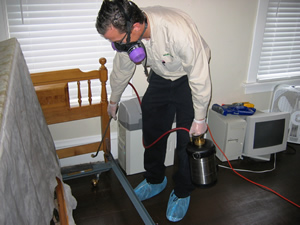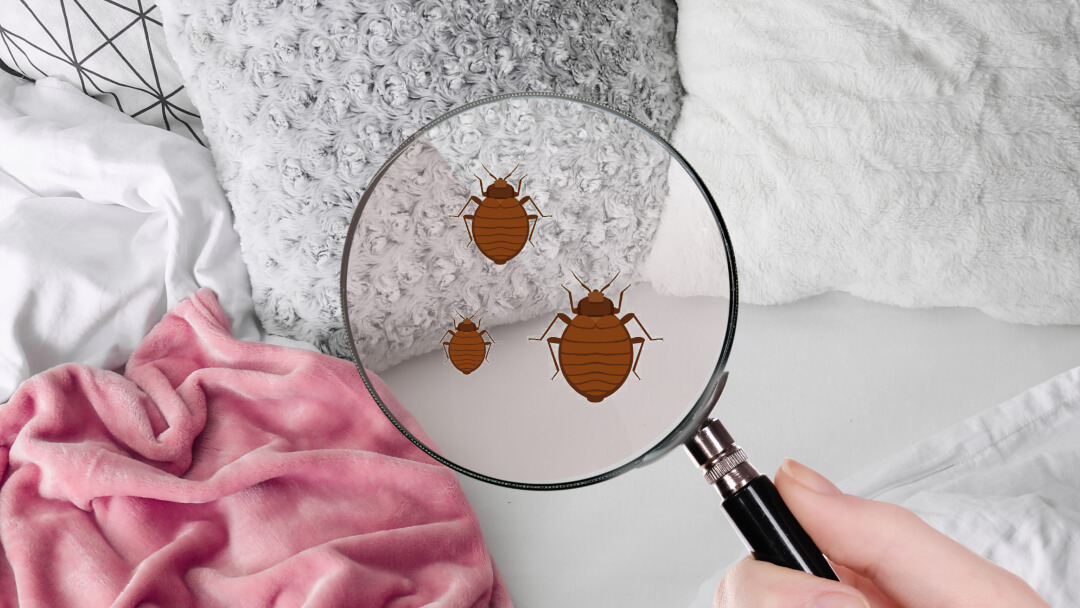Top-Rated Bed Bug Exterminator: DC Exterminator for Effective Treatment
Top-Rated Bed Bug Exterminator: DC Exterminator for Effective Treatment
Blog Article
Discovering the Scientific Research Behind Bed Pest Heat Treatments as a Sustainable Pest Monitoring Approach
One such method that has actually gotten traction in current years is the usage of warmth therapies to battle bed bug invasions. The intricacies of just how warm efficiently removes bed bugs and the broader ramifications for lasting insect management practices make this a topic worth discovering better.
Bed Bug Warm Treatment Refine

Thermal Death Point for Bed Bugs
Exposing bed insects to elevated temperatures beyond their thermal resistance variety is essential for accomplishing efficient elimination in heat therapy procedures. By reaching and preserving temperatures over the thermal death factor for bed bugs, pest administration specialists can ensure thorough elimination of bed pest populations, including hard-to-reach locations where chemical treatments may be much less efficient. Comprehending the thermal death factor for bed pests is important for applying effective heat treatment methods and accomplishing lasting bug monitoring results.
Benefits of Warmth Treatments
Having developed the crucial thermal death factor for bed bugs, it is vital to now check out the considerable benefits that warm treatments use in effectively getting rid of these resilient parasites. Warmth therapies existing a number of vital advantages when compared to typical chemical methods. Among the main advantages is that warm can pass through deep right into holes and fractures where bed pests conceal, making certain that even one of the most hard-to-reach locations are warmed to deadly temperature levels. This extensive strategy not only eliminates live insects yet additionally targets bed bug eggs, avoiding future invasions.
Furthermore, warm treatments are environmentally pleasant and non-toxic, making them a lasting bug monitoring approach. Unlike chemical pesticides, warmth treatments do not leave damaging deposits that can present threats to human health or the environment. This element is particularly vital in sensitive settings such as healthcare facilities, colleges, and suburbs where chemical use might not be desirable.
In addition, warmth therapies have a high success rate in removing bed pest invasions in a solitary therapy, reducing the need for multiple brows through and minimizing disturbance to go to my site occupants. This efficiency not just conserves money and time however also provides assurance to those managing bed pest problems.
Effectiveness of Heat Treatment

Warm therapies have actually the added advantage of eliminating bed bug eggs, which are usually immune to traditional chemical therapies. Generally, the performance of warm treatments in eradicating bed bug infestations makes them a lasting and dependable parasite management method.
Sustainable Pest Administration Perks
Carrying out sustainable pest monitoring practices supplies long-term benefits for both the atmosphere and public health and wellness. By using approaches such as warm treatments for pest control, we can minimize the dependence on damaging chemical pesticides that can have unfavorable results on ecosystems and human health - bed bug treatment. Lasting pest management methods help in protecting biodiversity by targeting specific bugs without harming non-target organisms, consequently keeping a well balanced community
In addition, lasting bug management techniques contribute to the overall health and wellness and well-being of the public. By decreasing exposure to harmful chemicals made use of in conventional insect control techniques, heat treatments give a more secure option for pest monitoring in household, commercial, and public rooms. This reduction in chemical use also aids in the original source stopping chemical residues from polluting water, soil, and air, securing ecological top quality.
Conclusion
Finally, bed bug heat therapies have been revealed to be a sustainable and effective parasite administration method. The thermal fatality point for bed pests makes them vulnerable to warm therapies, which have many benefits over conventional chemical therapies. The efficiency of heat therapies in eliminating bed pest invasions while lessening ecological influence highlights the possibility of this approach as a sustainable solution for insect control.
The bed insect warmth therapy process involves raising the temperature within plagued locations to a level that efficiently eliminates bed insects and their eggs. By reaching and maintaining temperature levels over the thermal death point for bed insects, pest management experts can make sure detailed elimination of bed bug populaces, consisting of hard-to-reach areas where chemical therapies might be much less efficient. One of the key benefits is that warmth can pass through deep right into crevices and cracks where bed insects conceal, ensuring that even the most hard-to-reach locations are heated up to deadly temperatures. Unlike chemical therapies that might leave behind resistant populations, heat therapies offer a environmentally friendly and non-toxic solution that can pass through deep into furnishings, walls, and other hard-to-reach areas where bed pests conceal.
The thermal fatality point for bed insects makes them vulnerable to heat treatments, from this source which have numerous advantages over traditional chemical treatments.
Report this page